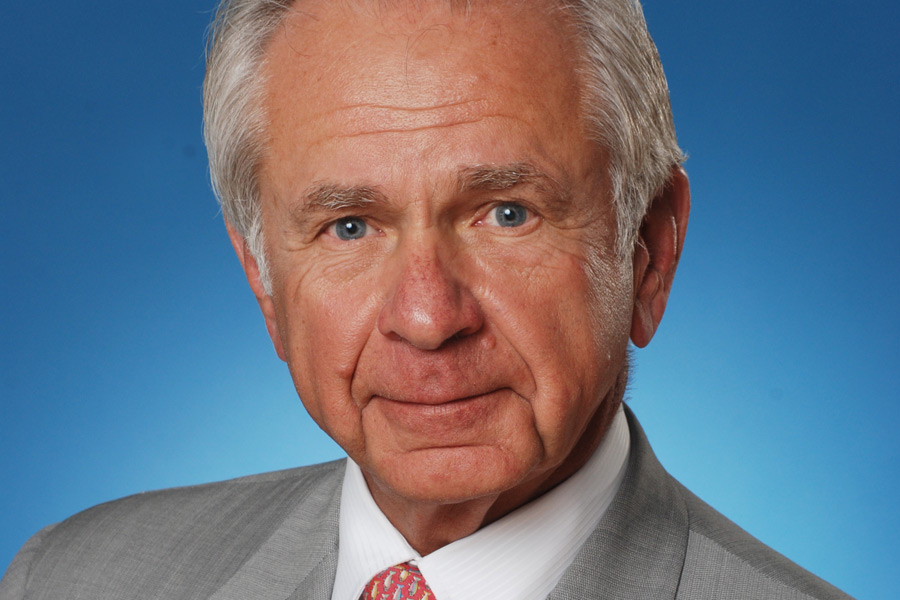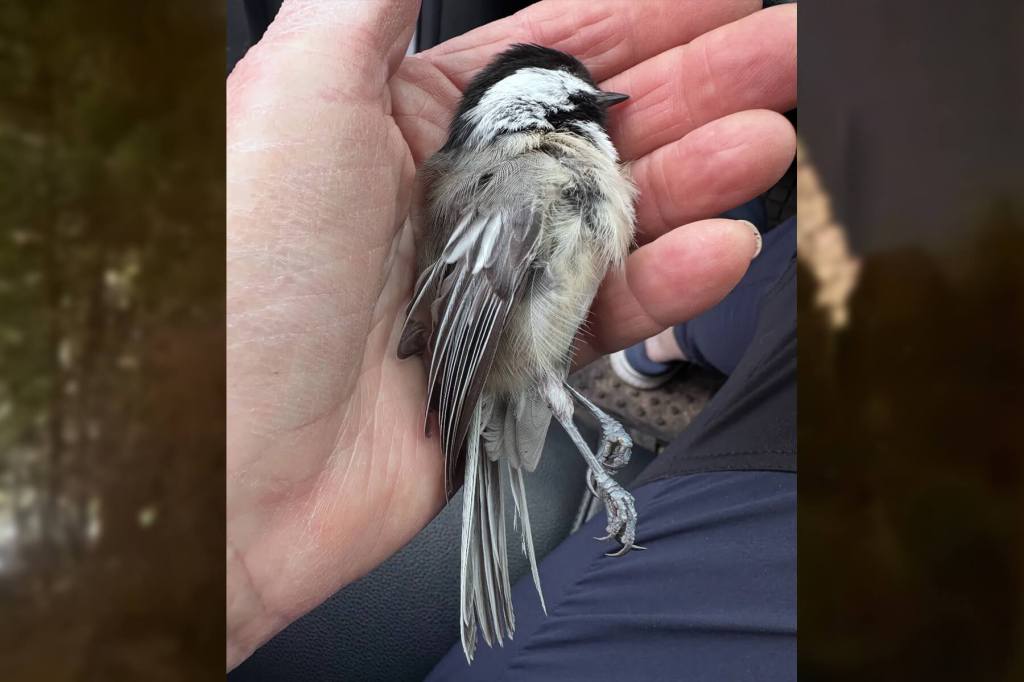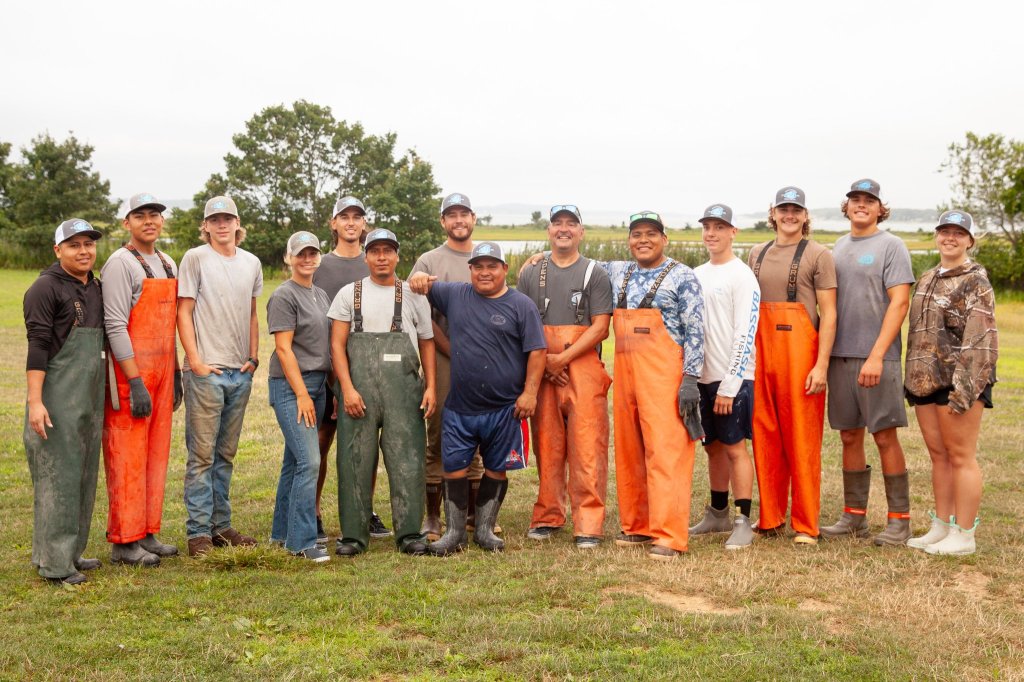Who's Here: John Kanas, Banker

In the summer of 1965, a young local boy named John Kanas was working as a counter man in a deli in East Moriches to save money for college. A senior in high school, he had his sights set on Southampton College, which at that time was part of Long Island University. Living with his parents on their family duck farm, he would have to commute from home, but at least he would be going to college.
After John’s freshman year at Southampton College, he went back to the deli as part-time manager. The owner, about halfway into the summer, told John he was going to close the deli due to personal reasons so he’d have to find other work.
But John Kanas liked working in the deli, and, according to the owner, it made money—not a lot, but enough for one person to get by. Kanas asked the owner to stay open for another two weeks. He would like to try to get a loan to buy the business from him. He was 19 years old.
Kanas bought the deli through the help of family, eventually hired someone to manage it, and went on to teach middle school on Long Island.
But then, in a random encounter, Kanas met the president of North Fork Bank in Mattituck. They struck up a conversation and John was offered a position as management trainee. Since the job offered tuition reimbursement, John took it with the intent to pay for law school and attend classes at night.
North Fork Bank had been founded in the late 19th century to serve the needs of the East End farming community. Mostly, at that time, it was about potatoes. And the potatoes were mostly about Polish-Americans, who owned the farms and with their families farmed it for generation after generation. Among the distinguished Polish families here were those with such names as Danowski, Krupski and Babinski. In the 1950s, about 40,000 acres of the East End were in potatoes and it was the dominant crop, with duck farming a distant second (there were about 30 duck farms on the East End).
One year later, the board of North Fork Bank had opened a few new branches and now wanted to open a branch in East Moriches. Branch banks were the coming thing. But people didn’t trust them much. They’d rather put their money into formidable bank-looking brick buildings with big safes in them. The way around this, when opening a branch, was to find someone in the local community who would lend his name to the bank and start it out as manager. What about that young man who owns the deli? somebody suggested.
Kanas, who had just graduated college and completed the management program, accepted the job of managing the new branch. There were plans to open still more branches after that—one would be in a neighboring town—and Kanas suggested that he be the man who opened that next branch, and any other after that. They offered him the position of Assistant to the President. He was 22.
Two years later, the president became ill and had to step down from his current position. John Adam Kanas was asked to be the acting President of North Fork Bank, something that would be a temporary position. To everyone’s surprise, however, Kanas ran the bank so well during the president’s disability that they made him president permanently. His goal was, he told the Board of Directors, to make North Fork one of the best banks in America. He would do it by doing something most thought impossible. He would maintain direct contact with all the customers. A banker would be just a direct phone call away, no matter how small that customer might be.
By any measure, the rise of North Fork Bank was a phenomenal success. When he came aboard as an employee of the bank in 1971, the value of the bank was under $10 million. In 2006, after several mergers and purchases of other banks, most notably Southold Bank and Greenpoint Savings Bank, there were 350 branches and the bank had $60 billion in assets. It was also considered the most well run mid-sized bank in America. But economic trouble lay ahead.
“In 2005, I got the sense that the economy would weaken and began talking to people about buying North Fork,” John told me. “This culminated in the sale to Capital One in 2006.”
The sale at the time was controversial. But the numbers told the story. A bank that had been valued at less than $10 million got sold for a whopping $14 billion. Those who had invested in it became wealthy. Kanas was the largest individual shareholder. And he signed on for the next three years as President of a division of Capital One, which, as it turned out, he didn’t particularly enjoy. After six months, he asked to be let out of his job early. And so he left with an agreement to not open a competing bank operation in the New York metropolitan area until 2013. And so he retired. Or so, at first, everyone thought.
Taking some time off, Kanas continued to read about his old banking business. He realized there were numerous bargains out there, if only you were in the right place at the right time. So he decided to explore opportunities. “I went to see Wilbur Ross, the billionaire who deals in buying and selling distressed companies out of his office in New York. I was told he had a fund for banking business opportunities. And I asked if he would partner with me. I’d go around the country looking for an opportunity. And if I found one that we agreed made sense, we’d do it. We shook hands on this.”
What Kanas found was BankUnited. BankUnited was one of the two large American banks that had been seized by federal regulators after the real estate collapse in 2008. It had 80 branches in Florida and the government was accepting bids from investors to take it over and revive it. They had sent out 63 bid packages looking for bidders.
“Wilbur and I formed an investment group for this project. We took in Carlyle, Blackstone, Centerbridge, and we put in a bid for $940 million and won over two other bidders.”
So now, he’s back at work again. He just couldn’t resist.
“Every Tuesday and Wednesday now, I work in Miami,” he told me. “I fly from Gabreski Airport in Westhampton and back.”
He got it going. On February 17, 2013, Crain’s, the New York City business magazine, ran a story with the following headline and lead paragraph:
JOHN KANAS IS BACK
“John Kanas, the city’s most successful community banker over the past 30 years, is returning to New York. The executive who sold North Fork Bancorp for a whopping $14 billion just before the financial crisis hit is now carrying the banner of BankUnited, a failed Florida thrift that he bought for a fire-sale price in 2009.”
That Kanas was back with his magic touch electrified the banking community. It became almost an immediate success. After just 19 months, the company went public and is valued at approximately $3.5 billion, with $17 billion in assets. The focus of the loans the bank makes are in commercial lending, loans for apartments and multi-family buildings, and for businesses.
“We have been growing at the rate of $1 billion every quarter,” Kanas told me.
Kanas’s magic, of course, is the level of customer service he offers, which he has taught to those who have worked for him. When the phone rings, you answer it.
“I’ve been able to cherry-pick talented people I’ve known in my life, bankers with whom I have long-standing relationships.”
Of course, most of those he knows are from Long Island and the New York metropolitan area. Eyes turned to New York City, the banking capital of the world, when BankUnited opened its first branch in Manhattan, in 2013. Capital One, the company with which he had a non-compete, promptly sued him.
“We were arriving six months early,” Kanas told me. “We settled for $20 million, which I had to pay personally.”
So a new chapter has begun. But the goal is the same—to create one of the best-run banks in America. And this time, he has a bank that’s benefitting from the two strongest markets in the Unites States: South Florida and New York City. This looks very promising.
I did ask John Kanas what he thinks of the present economic conditions, and this is what he had to say.
“Banks are much safer now. Things are overheating again, but we’ll deal with it. This is nothing like it was then.” By the way, Forbes recently ranked BankUnited eighth best bank in the U.S.
John Kanas and his wife, Elaine, still live on the family farm in East Moriches. In the interval from the days when John was a boy until now, the number of duck farms on eastern Long Island has rapidly declined. At the present time, there are only two duck farms—Massey in Eastport and Crescent in Aquebogue. Kanas did not try to re-open his father’s duck farm, but he bought property around it—a total of 85 acres—built a main house and keeps a few ducks in a pond. He also has livestock, uses 10 acres as a tree farm, and the other 75 acres are mostly for landscaping. He also stores old cars in one of the old barns, and he has a 35-foot antique motor boat that he keeps at a local marina.
On the first of July, John Kanas donated $2 million from his family foundation to East End Hospice in Westhampton Beach.



